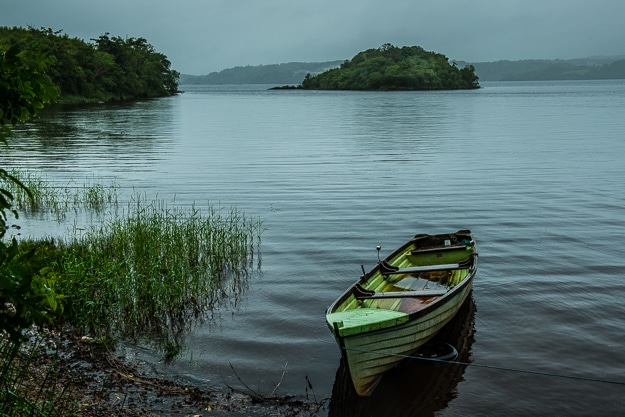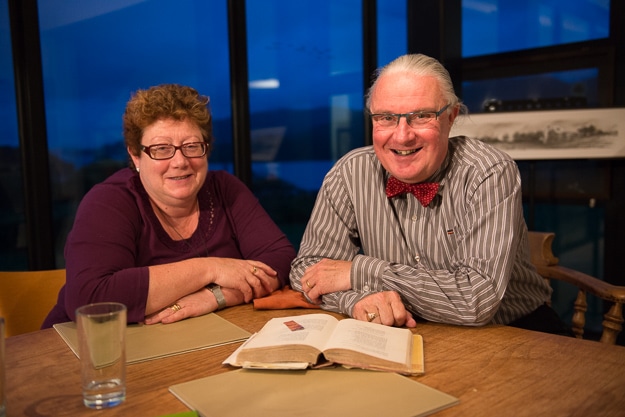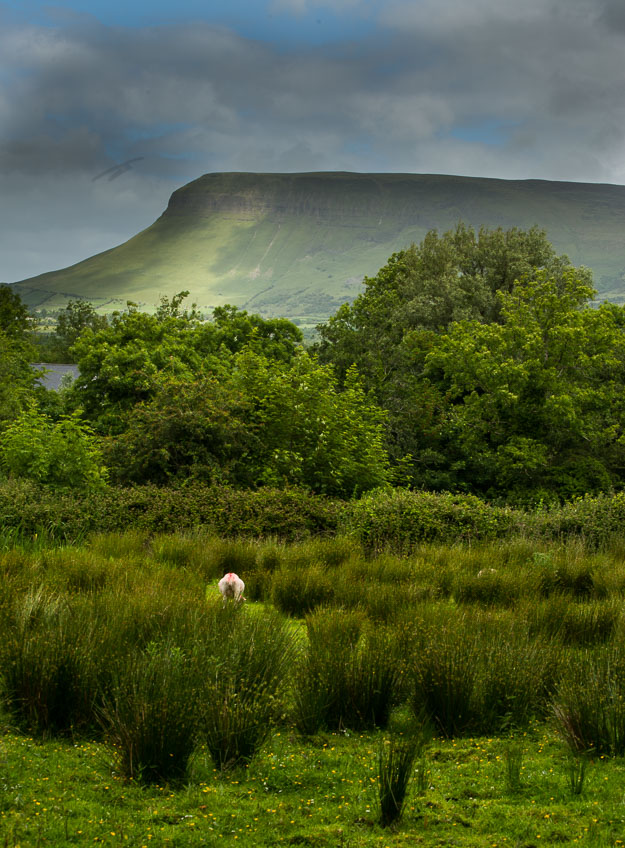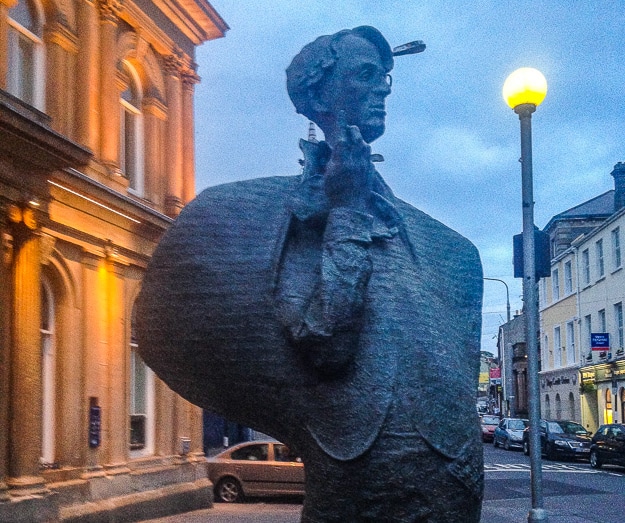
More than 35 years after our first visit, we returned to Sligo, the town and the county of Ireland made famous by the poetry of W.B. Yeats. We wanted to recall Yeats' literary life, walk the area, and take photos.
Both Kris and I feature ourselves as fans–if not scholars–of Yeats. Of course, over the years, as will happen, we've learned how little we know. We had no basis in Irish mythology or history, and precious little sense of who Cúchulainn, Wolfe Tone, or Charles Parnell were. Our appreciation isn't diminished, though. I once regaled a blonde friend with “A Poem for Anne Gregory” (about a girl with yellow hair.) We called our home garden a “bee loud glade.” It seemed only right to refer to the salient lines from “The Second Coming” on September 11, 2001.
Since that first visit in 1975, Sligo has hosted annual academic conferences and summer schools and improved many city landmarks to take full touristic advantage of their local hero. Our recent visit fell outside the time frame of Sligo's regular Yeats events, though. So it dawned on us to enlist some help from an expert, someone immersed in both the poetry and the environment of the place.
We asked at the Sligo branch of Failte Ireland, the national tourist bureau, if there was such a person. We'd barely finished asking when she blurted, “Of course. His name is Damien Brennan, and here’s his phone number,” handing us a sheet of paper. The luck of the Irish-American to have asked the right person.

Feeling a little like intruders, we called Damien, sort of expecting a brush off, or at best an offer to meet for tea in some Sligo cafe. Instead, we got an immediate, “Come to my home for dinner tomorrow night, and we’ll talk about Yeats, and Sligo, and whatever else comes to mind.”
So, we made a date, and even drove the remote road out of town a day in advance to make sure we could find his house, and then searched for a bookstore with a volume of Yeats so we could brush up a bit. The next day we picked up a bottle of wine and headed out.
We hadn’t realized until we drove up the road to Damien’s house that it was on a hillside overlooking Lough Gill.
Lough Gill, for God’s sake, right outside the floor-to-ceiling windows. Lough Gill–the lake that is home to the Lake Isle of Innisfree and its bee-loud glade. We’d died and gone to Yeats heaven.
And that was before we even opened any wine.
Damien and his wife Paula Gilvarry were even more perfect hosts than we could have imagined. First of all, Paula is a retired doctor, a former restaurant owner, and a gourmet cook. She served us a locally caught grilled salmon worthy of its own poetry. Like Damien, she’s also expert on all things Sligo, Ireland, food, and anything else you might be interested in. Together, Damien and Paula and their dogs made us feel right at home. Quickly we discovered we were among friends with common interests and similar bookshelves. We relaxed in their familiar living room, and any pressure we might have felt to pretend we were Yeats authorities dissipated as the sun set.

As we ate and talked, we learned much about Yeats, his family, and his spurts of time in Sligo. We talked about how the history of Ireland informed his poetry. And we looked out the window. As Damien pointed up Lough Gill toward Innisfree, and across another direction to Sleuth Wood, lines from “The Lake Isle of Innisfree,” “The Stolen Child,” “The Fiddler of Dooney,” and “The Song of Wandering Aengus,” flowed out of his mouth as melodically as the water lapping on the close shore.

Damien's background, we learned, includes theatrical work and guiding tours, besides a decade with Ireland's tourism board. In short, he's accustomed to public speaking and getting his lines right. His voice comes, too, from knowing this piece of land. He and Paula built their home, called Broc House, on his family property. This familiarity was driven home when the phone rang and we overhead Damien telling the caller where to find the proper implements to care for his mother's yard, just over the hill.
Eventually, out came some some more wine, then coffee and brandy, accompanied by Damien’s well-used Complete Works of W. B. Yeats. He turned pages frayed from much use and recited bits from poems we’d discussed earlier. We noted that his book was the exact same edition as the one we’d studied from almost 40 years before. It was our pleasure to watch him turn to the exact poem we wanted, and conjure specific lines while we soaked up the experience.
Here’s a taste, from Yeats’ “The Lake Isle of Innisfree.”
I will arise and go now, and go to Innisfree,
And a small cabin build there, of clay and wattles made;
Nine bean-rows will I have there, a hive for the honey-bee,
And live alone in the bee-loud glade.
Damien and Paula give Yeats-oriented tours and dinners for the literary set visiting Sligo. You can check out schedules, costs, etc. by emailing them at yeatssligo@gmail.com. It’s a side of Ireland’s history and literature you’ll never get any other way.
Here is some more of Yeats' poetry, “Under Ben Bulben,” the closing stanza of which is inscribed on his gravestone.
Up Your Travel Skills
Looking to book your next trip? Use these resources that are tried and tested by us. First, to get our best travel tips, sign up for our email newsletter. Then, be sure to start your reading with our Resources Page where we highlight all the great travel companies and products that we trust. Travel Accessories: Check out our list of all the accessories we carry to make getting there and being there a lot easier. Credit Cards: See our detailed post on how to choose the right travel rewards credit card for you. Flights: Start finding the very best flight deals by subscribing to Thrifty Traveler. Book your Hotel: Find the best prices on hotels with Booking.com. See all of the gear and books we like in one place on our Amazon shop.Got a comment on this post? Join the conversation on Facebook, Instagram, or Threads and share your thoughts!


Comments are closed.